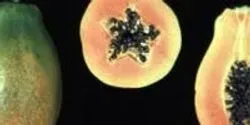Food & Beverage

Using conventional breeding methods, U.S. Department of Agriculture (USDA) scientists have developed a new rice cultivar that can hold its own against barnyardgrass and other costly weeds, opening the door to reduced herbicide use.

A University of Florida researcher has mapped the DNA genome of a new strain of citrus greening that could further threaten Florida’s beleaguered $9 billion citrus industry. Knowing the genetic makeup of the various strains is critical to finding a cure.

In a study of older mice, wolfberries appear to interact with the influenza vaccine to offer additional protection against the flu virus

Food testing labs have traditionally used conventional PCR and quantitative real-time PCR (qPCR) to detect the presence of genetically modified organisms (GMOs) in food and feed. When quantification is required, GMO content in these samples is expressed in relative terms as the ratio of the quantity of the transgene, which is the nucleic acid fragment introduced in the host genome, to that of an endogene, a gene normally found in the host genome.

Lifeline Foods’ lab, which does quality control testing on the corn products the company produces before they are shipped to both domestic and international food and beverage manufacturers, faces unique challenges. We explore the management and communication issues necessary to maintain that lab’s success.














